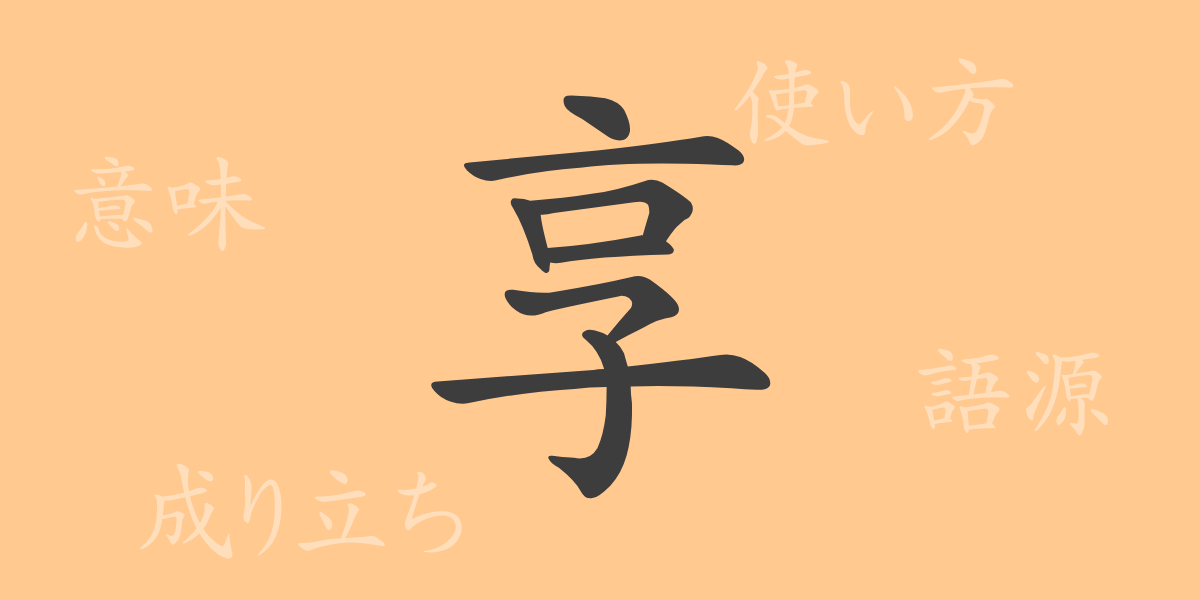The beauty of the Japanese language is reflected in its unique characters. Each kanji holds its own history and meaning, deeply rooted in Japanese culture. Today, we focus on the commonly used kanji “享(きょう, うける)” and explore its origins, modern usage, and examples. Through the rich expressiveness of this single character, let’s rediscover the charm of kanji.
Origin of 享(きょう, うける)
The kanji “享(きょう, うける)” originates from ancient China. It was initially written as “亯(きょう)” and depicted the act of offering food to the gods during rituals. Over time, “亯(きょう)” was simplified to “享(きょう, うける)”. This evolution is an example of how writing became more efficient over the centuries.
Meanings and Usage of 享(きょう, うける)
The kanji “享(きょう, うける)” means “to receive,” “to accept,” and “to enjoy.” It is used to express the joy and fulfillment of receiving something, such as time or benefits. This character is often used to denote situations where one receives blessings or advantages.
Readings, Stroke Count, and Radical of 享(きょう, うける)
Let’s delve deeper into the specifics of the kanji “享(きょう, うける).”
- Readings: On-yomi (音読み) is “キョウ(きょう),” and Kun-yomi (訓読み) is “うける(うける).”
- Stroke count: “享(きょう, うける)” consists of 8 strokes.
- Radical: The radical for this kanji is “亠(なべぶた, nabebuta).”
Idioms, Proverbs, and Phrases Using 享(きょう, うける)
There are several idioms, proverbs, and phrases that include “享(きょう, うける).”
- 享楽(きょうらく) – Seeking pleasure.
- 享受(きょうじゅ) – Receiving benefits or blessings.
- 共享(きょうかん) – Sharing and enjoying together.
- 享有(きょうゆう) – Possessing rights or privileges.
These expressions are often used to describe richness and happiness in daily life.
Summary of 享(きょう, うける)
The kanji “享(きょう, うける)” conveys the depth of history and richness of language through its evolution and meaning. This character, which signifies the joy of receiving, holds a unique place in the Japanese language. Through this exploration, we realize the infinite possibilities of a single kanji and the depth of emotions conveyed through language.

























